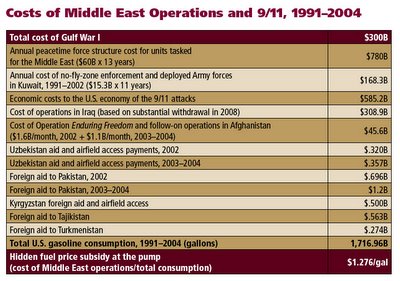CALIFORNIA: A Dearth of Assembly Leadership on Conversion Technologies
California is the big prize in alternative fuel production facility deployment. Not only does it have the largest commuter market, but, as it has demonstrated so many times before, California defines trends that spread throughout the country and then the world. You almost have to expect that the tipping point for any meaningful fuel paradigm shift will have to come through California.
That is why it is so crucial that legislation in the state support innovation, not stifle it. Unfortunately, inertia in California's State Assembly and an unwillingness to challenge antiquated environmental biases has choked investment in innovation. Legislators who should know better are fearful that they will be painted with a scarlet "A" for "anti-environmentalist" and then thrown out at election time.
Witness a recent (11/16/05) CA Assembly Natural Resources Committee hearing for AB 1090, the Conversion Technology Bill. The hearing was held in Los Angeles at which numerous experts, local politicians, and research scientists cited numerous studies and spoke glowingly about advancements in CTs and their import to improving life quality in So. CA. It was clear at the hearing that the most populous region of the state is more than ready to attract and allocate investment for R&D and deployment of new CT facilities - without any risk to the environment. Incredibly, NOT ONE of the five So. CA Assembly members (half the committee) even showed up for the hearing! They also found a way to accept and then days later summarily reject the findings of a 2-year, $1.5 million study funded by a utilities' Task Force that touted the advancements in CTs and recommended the very changes specified in the Bill.
It turns out that all terms of the bill have to be acceptable to Californians Against Waste (CAW), a recycling lobbying group with strong ties to giant landfill operators in the state. To say that they have a vested interest in the disposition of the bill would be a gross understatement. In my opinion, it is unethical for them to dictate the Bill's terms which impact recycling in every municipality in the state.
As is noted in the following article which appeared in the Sacramento Bee (3/26/06) what is needed is "inspiring, galvanizing leadership." Regrettably, California lacks such a resource and, apparently, ethical backbone.
-----------------
The carbohydrate economy
As technology improves, biofuel sources are everywhere
By Mark Braly -- Special To The Bee
Loyd Forrest, chief of a leading biomass energy consulting firm, TSS Consultants in Rancho Cordova, says he has never seen such interest by big-time investors in biomass energy. Bill Gates put $84 million into Pacific Ethanol, a company headed by former California Secretary of State Bill Jones.
The excitement comes from new technology that could create more energy from organic sources. Two California biotech firms, both Danish-owned, have been working to reduce the cost of making fuel out of cellulose materials - crop wastes, weeds, forest underbrush, urban garbage or nearly anything organic. Novozymes' bioenergy operation in Davis says it has proved a 30-fold reduction in the cost of the enzymes needed to break down cellulose material for fermentation into alcohol.
Glenn Nedwin, president of Novozymes' biomass operation, thinks the technology is almost here. He sees two to five more years of work on reducing costs of other steps of the ethanol process. But even today cellulosic biomass energy might be competitive, depending on the cost of oil and corn: "Corn costs $40 a ton, but garbage might be free."
The technology has been demonstrated in a pilot plant by a Canadian firm, Iogen.
It appears these feedstocks exist or could be cultivated economically in such abundance that oil independence by mid-century is possible. Equally important, the benefit for climate change and the environment is so evident that environmentalists, who have been leery of Midwest corn ethanol because it consumes so much fossil fuel to grow, are coming on board.
Converting urban waste to energy has a long, contentious history in the state. Fierce public opposition to incineration and the unfriendly regulatory climate have stopped new projects. But technology has improved.
Despite Gov. Arnold Schwarzenegger's commitment to reduce greenhouse gas emissions and promote renewables, California has not resolved regulatory hurdles. The state's Integrated Waste Management Board is bound by law to promote recycling over energy recovery from waste. And the state's Air Resources Board thinks that low blends of ethanol in gasoline could increase some smog ingredients. Biodiesel, which is made from vegetable oil, or even used restaurant grease, requiring little refinement, is stalled by similar concerns. With pure ethanol or high blends, such as the E85 mixture sold in the Midwest, these emissions do not seem to be a problem.
Many advocates of increased energy self-sufficiency have called for a government-led Apollo-or Manhattan-type project to create this better energy future sooner rather than later. But those efforts sought to create technology out of basic science and dreams. The technology that could bring us energy relief is much closer, if not here.
What it does have in common with those past heroic national efforts is the need for inspiring, galvanizing leadership.












